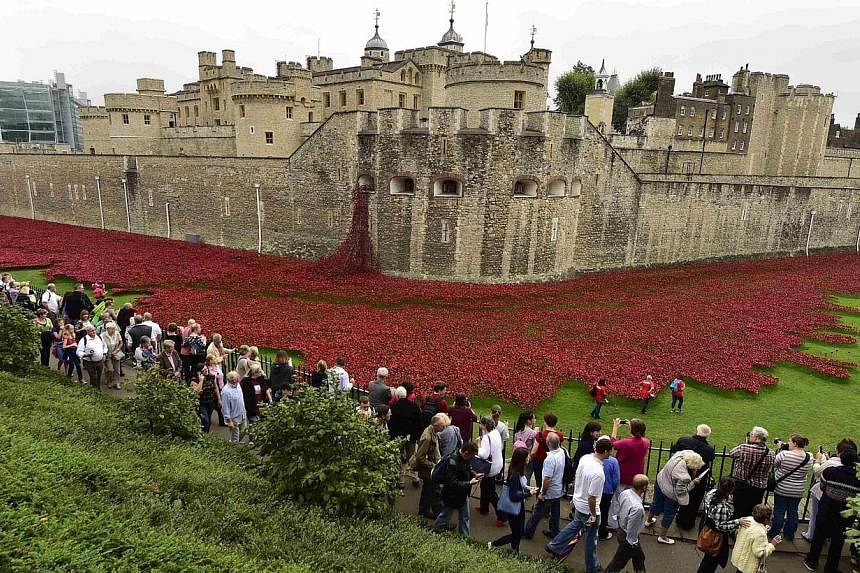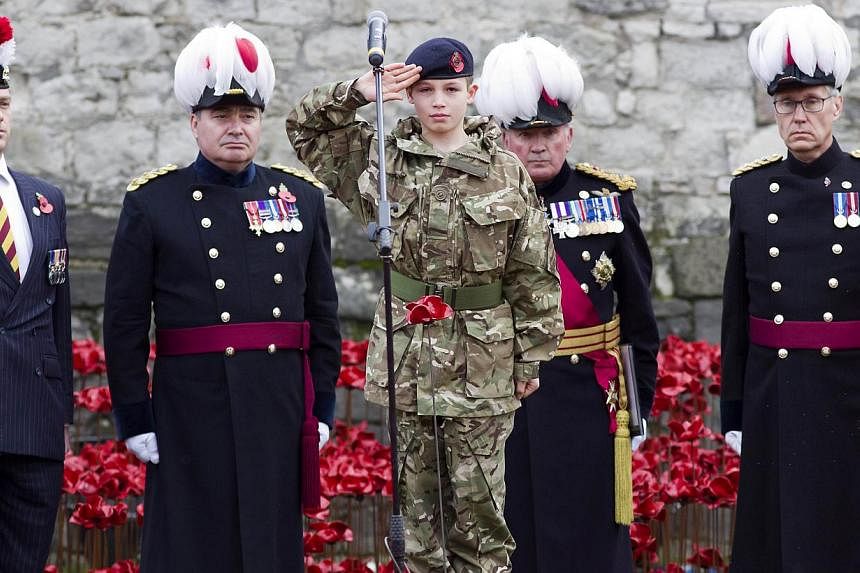LONDON (AFP) - A teenage army cadet on Tuesday planted the last of 888,246 ceramic poppies at the Tower of London, representing every UK forces World War I fatality, as Britain marked Armistice Day.
A century on from the start of the 1914-1918 Great War, people around Britain stood for the traditional two-minute silence remembering all those who have given their lives in conflict.
Cadet Harry Hayes, 13, was watched by a crowd of thousands at the Tower of London as he completed the poppy installation Blood Swept Lands And Seas Of Red.
The vast artwork, filling the moat surrounding the 11th-century fortress with a blood-red tide, has captured the public imagination and become the focal point for World War I centenary commemorations.
An estimated five million people have been to the castle to see the poppies - the symbol of remembrance - and in recent days, the floodlights have been kept on so people can visit through the night.
"We always hoped the installation would capture the public imagination yet we could not predict the level of support we have received," said former army chief General Richard Dannatt, now the Constable of the Tower of London.
The poppies have all been sold in aid of veterans' charities.
They were to be removed from Wednesday but a section will now remain until the end of November to allow more people to see them.
The 888,246 figure counts all the identified graves and dead commemorated on memorials in the Commonwealth War Graves Commission's care, who were serving in the United Kingdom forces.
The figure therefore includes troops from British empire colonies, but does not include those from the separate forces of Australia, Canada, India, New Zealand and South Africa.
Hayes said he was nervous as he installed the final poppy.
"It is an amazing honour," he told Sky News television.
The two-minute silence at 11am (7pm Singapore time) marked the end of World War I at the same time on Nov 11, 1918.
Prime Minister David Cameron paid his respects at the Cenotaph, along with hundreds of civil servants from the surrounding ministries.
Thousands more people massed in the nearby Trafalgar Square, where poppies were dropped into the fountains.
Inside London's Westminster Abbey, clergy gathered round the Tomb of the Unknown Warrior, a body brought back from the Western Front and buried among the kings in 1920.
Outside St Paul's Cathedral, hundreds of city workers stood together in silence as the dean led a service of prayer from the steps. Traffic came to a standstill as the bells chimed 11.
The England football team, training at their St George's Park base in Burton, central England, were joined by members of the armed forces in marking the silence on the main pitch.


